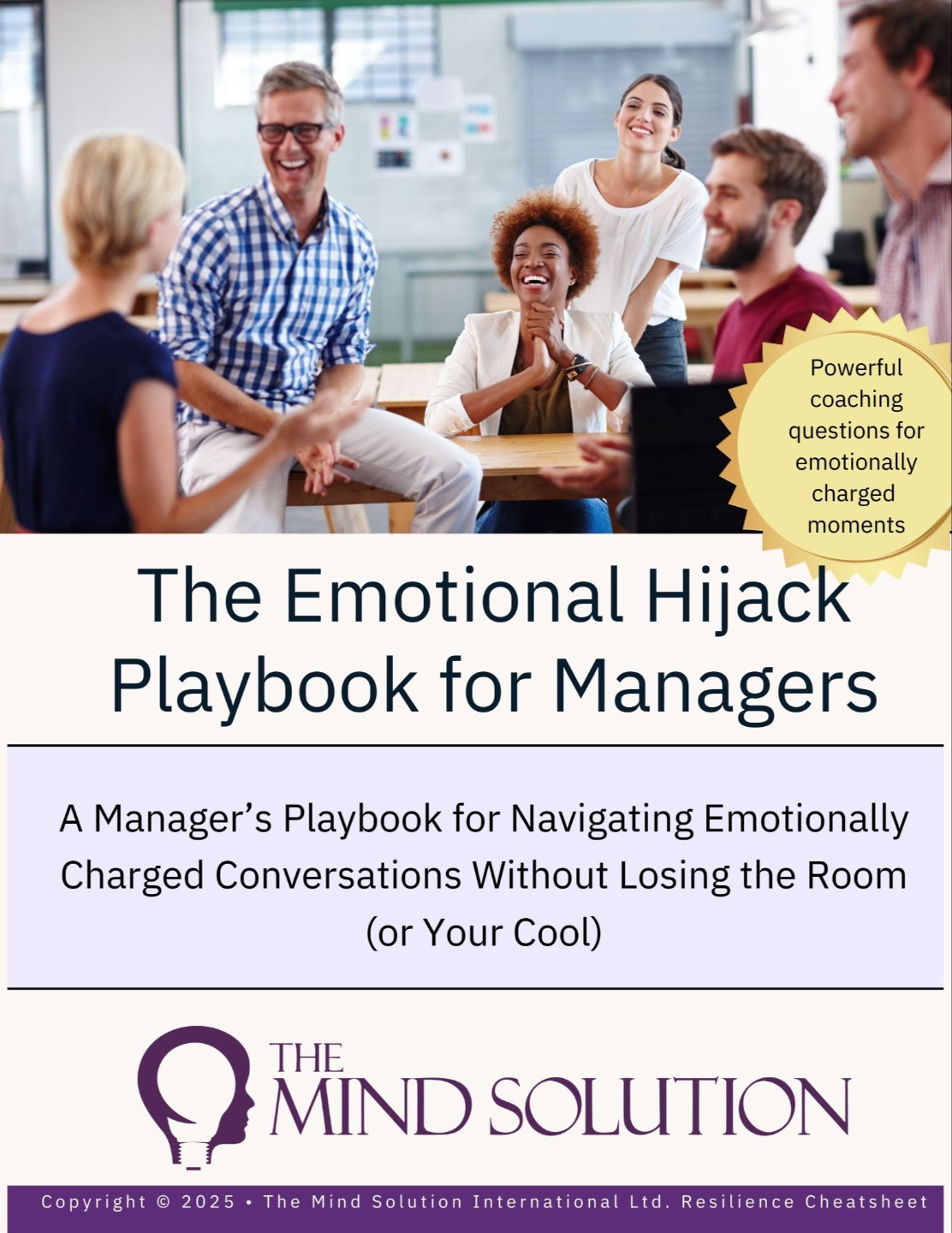Let’s Rethink What “Managing Mental Health” Really Means at Work
Aug 01, 2025
We need to rethink what “managing” mental health means
When people hear the phrase “managing mental health,” they often think of policies, procedures, and maybe a mental health awareness poster in the staff kitchen. But managing mental health in the workplace isn’t about handling people or trying to fix them.
It’s about creating the kind of environment where people feel safe enough to be human.
And that’s not something you can train in an hour. It's not something you tick off a to-do list. It’s something you live moment by moment, conversation by conversation.
As someone who has sat opposite people navigating grief, trauma, illness, and breakdowns, and as someone who used to manage large operational teams in HR, I can tell you: mental health isn’t always loud.
It doesn’t walk into your office with a label. It shows up quietly. Slowly. In missed deadlines, shorter replies, cameras turned off, or the person who’s usually on top of everything suddenly slipping behind.
The challenge is that most managers aren’t trained to see these things. Or they’re so focused on performance, targets, and pressure from above that they stop seeing the person altogether.
Why "mental health awareness" isn’t enough
Yes, we’re talking more about employee wellbeing in the workplace now than we did a decade ago, and that’s a step forward. But it’s also become oversimplified.
Somewhere along the way, mental health awareness got reduced to “spot the signs of stress.”
But here’s the truth:
Mental health isn’t always about stress.
Sometimes it’s grief. Sometimes it’s fear. Sometimes it’s that sense of not coping, even if everything looks fine on the outside.
And it’s never just an internal experience; it’s relational. It’s shaped by whether people feel seen, valued, and safe, or quietly judged and sidelined.
That’s why one of the most powerful things a manager can do isn’t complicated. It’s simply asking:
“How are you really?”
And then… pausing. Waiting. Listening.
Not filling the silence. Not fixing.
What stops managers from having real conversations?
Having delivered hundreds of online mental health training and in-person sessions, the same fear shows up every time:
“What if I say the wrong thing?”
“What if I make it worse?”
“What if they tell me something I can’t handle?”
These fears are completely understandable. But here’s what I always share with them:
If someone is already struggling, staying silent isn’t neutral. It’s a message.
And the impact of that silence can be far more damaging than fumbling through a heartfelt conversation.
You don’t need the perfect words. You don’t need to be a therapist.
But you do need to be present. You need to listen. And you need to stop assuming.
This isn’t about being soft. It’s about being human.
There’s a phrase I’ve heard in corporate spaces more than once:
“People should leave their personal problems at the door.”
As if we can split ourselves in two when we walk into work.
The reality? You get the whole person. You get the employee and their grief. Their worry. Their childcare crisis. Their health scares. Their heartaches.
And if organisations want high-performing teams, they need to recognise that wellness at work isn’t just about yoga or fruit bowls or one-off employee wellbeing webinars, it’s about how safe someone feels to be themselves.
You cannot access someone’s best thinking, creativity, or leadership if their nervous system is shutting down.
How psychological safety starts with one manager
One of the most overlooked truths about employee wellbeing in the workplace is this:
You don’t need a sweeping corporate initiative to start changing things.
It starts with one manager. One micro-culture. One team that feels a little more human.
I’ve worked with managers who made the simplest of changes: weekly check-ins, pausing before assumptions, asking better questions, and saw a complete shift in performance and morale.
Because when someone feels seen, supported, and not judged… something unlocks.
Performance rises. Loyalty deepens. Absences drop. The need for HR intervention often disappears.
The most powerful thing a manager ever did?
It wasn’t some grand wellbeing initiative.
It was a manager noticing that something had changed. Her team member was a little quieter. Not herself.
So she gently checked in. Not once, but again and again.
Eventually, the team member opened up. She’d found a lump. She was waiting for results.
The manager didn’t panic. She didn’t try to fix it. She just walked with her in a park, during lockdown, and listened.
That’s it. She listened.
And that moment did more for employee wellbeing than a dozen workshops ever could.
Final thought: Mental health support starts with leadership presence
Managing mental health at work isn’t about solving people’s problems.
It’s about shifting how we lead.
Listening before we speak. Asking before we assume. Making space for the whole human.
The best managers I’ve trained? They weren’t perfect. They were present.
They knew how to ask:
“What would help you right now?”
And sometimes, that’s all someone needs.
Ready to equip your managers with the knowledge and listening skills to proactively support mental health in the workplace? Our mental health training for managers programme can be tailored to exactly what your managers and organisation need. Schedule a training call now.
The Emotional Hijack Playbook For Managers
A Manager’s Free Resource for Navigating Emotionally Charged Conversations Without Losing the Room (or Your Cool).
Perfect to use in your next one-to-one.







